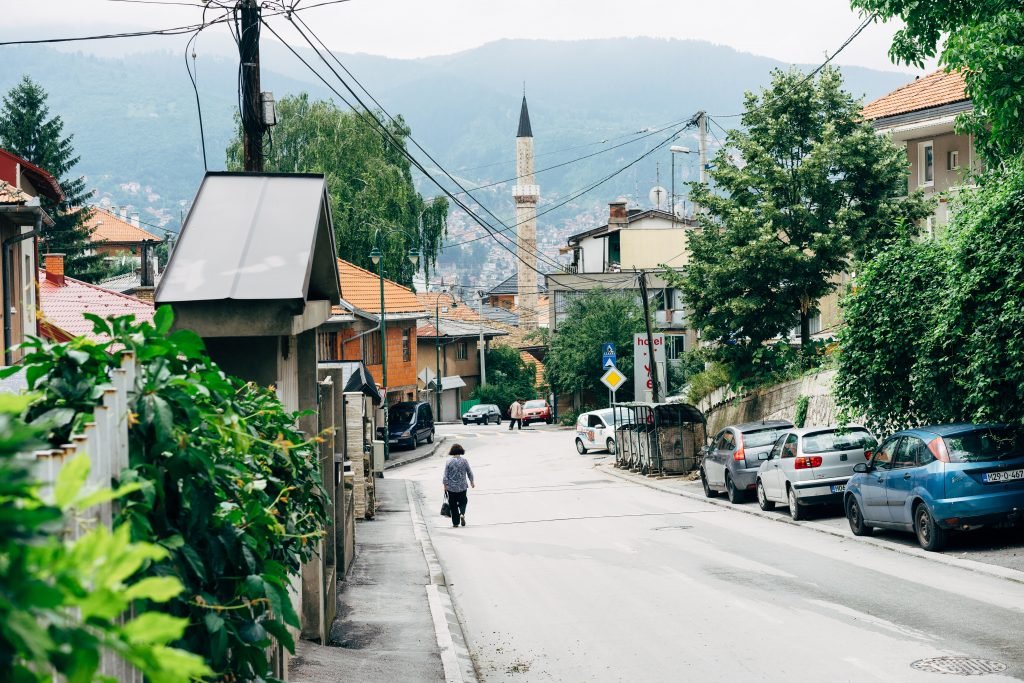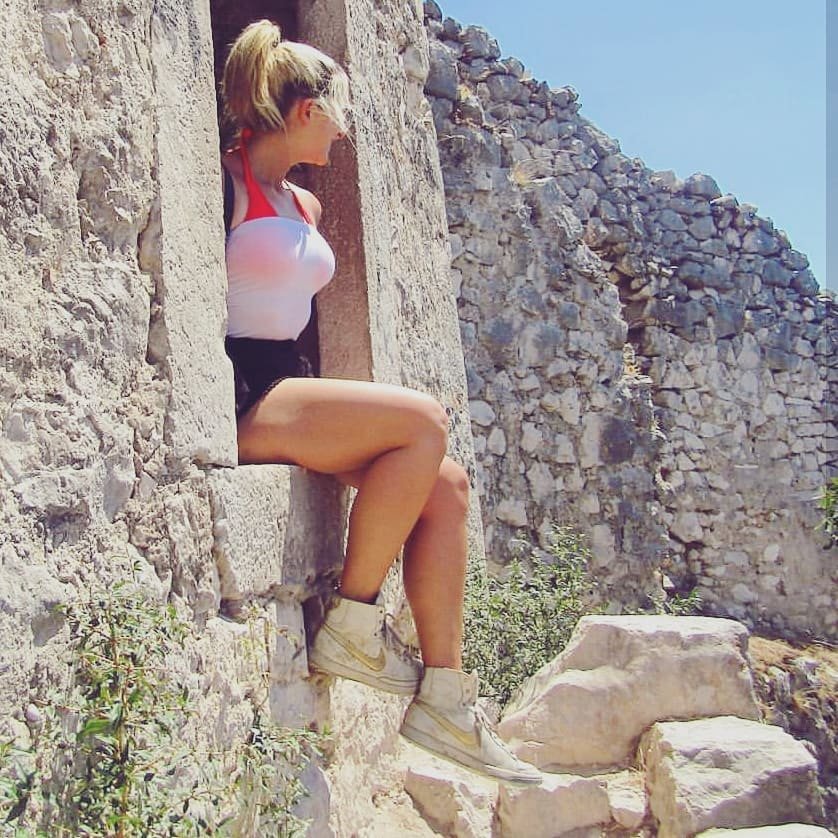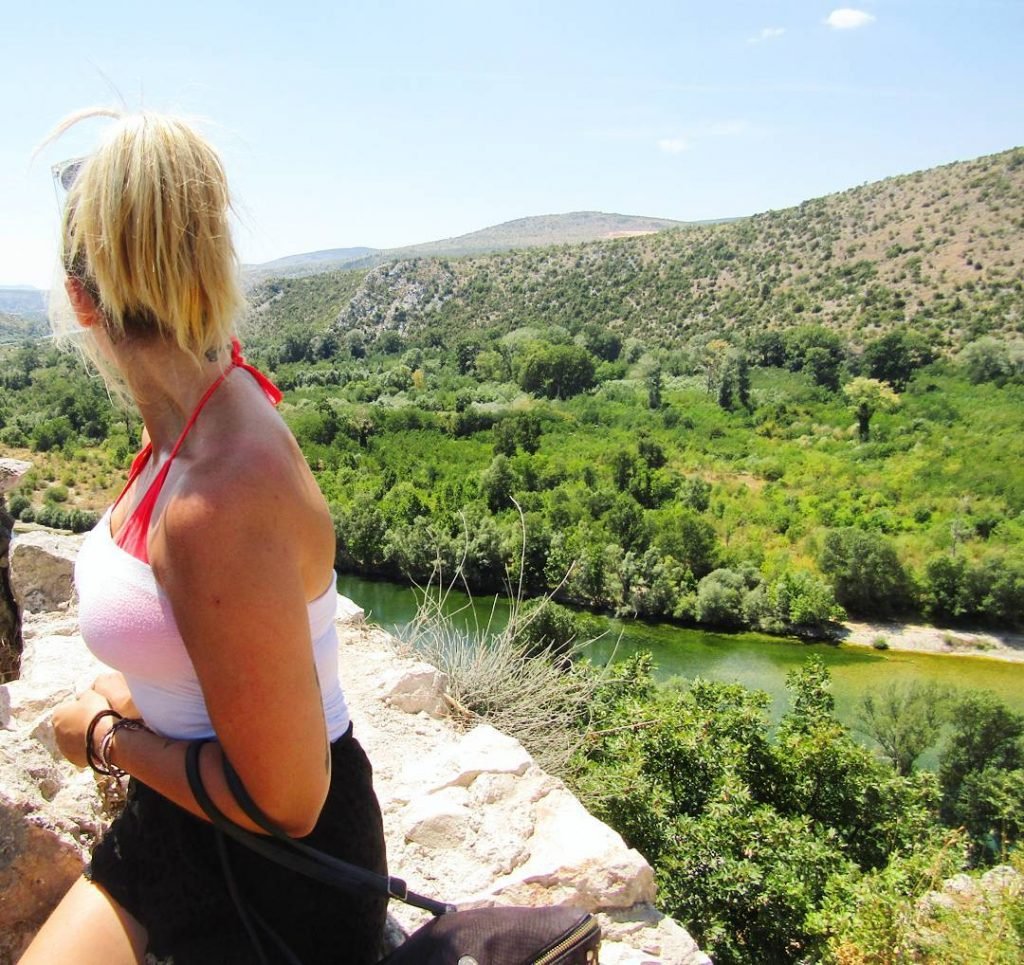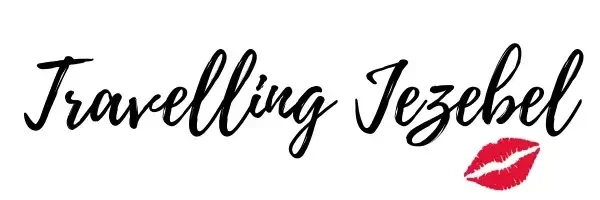Visiting Blagaj Tekke, Pocitelj & Kravice Falls | Bosnia & Herzegovina
I didn’t plan to visit Bosnia and Herzegovina. As with most of the places I’ve ended up, it just sort of happened. I’d been sunning myself in Croatia with a couple of friends and I knew that I was going to continue travelling, but I had no idea where to go next.
To me, the words Bosnia and Herzegovina just made me think of obscure Eurovision entries, and, wait, wasn’t there a war there?
Yeah, that’s how ignorant I was.
It was only after several people recommended Bosnia to me that I figured – well, I may as well. It’s only a bus ride away.
And so, knowing nothing about Bosnia and Herzegovina, I boarded a jenky bus from Split and embarked on my journey to Mostar, my first stop in Bosnia.

Blagaj Tekke, Pocitelj & Kravice Falls | Visiting Bosnia
As the bus shuddered over the border between Croatia and Bosnia, I could immediately tell that I had entered a different country. Unlike most places, where the only hint that you’re in a different nation is the text message that you receive from your cell phone provider, the difference between Croatia and Bosnia and Herzegovina is stark.
Friends I’d met in Croatia joked that ‘you can tell you’re not in the EU anymore!’ and they weren’t wrong.
I’m not sure whether it was the complete absence of streetlights, the potholed roads or the knowledge that the beautiful mountains surrounding us were still home to undiscovered landmines, but something had definitely changed.
As the bus swung dangerously around the bends on the steep descent into Mostar, a road that I’d later find out is the chief route for the transportation of ‘drugs, guns and girls,’ into the rest of the Balkans and beyond, I was full of nervous excitement.
Little did I know that the week to come was going to be one of the most eye-opening weeks of my life, and that while Bosnia’s beauty would have me falling in love, learning of its history would change me forever.

Driving into Mostar, I felt as though I was entering an enchanted kingdom. I had never heard of Stari Most, the famous Mostar Bridge, and as we made our way around the perimeter of the Old Town, lit up under the stars, I couldn’t believe what I was seeing.
How had this place not been on my radar before?
I arrived at my hostel at around 10pm, a quaint family place named Savat Guesthouse, and got an early night ready for my first day in Bosnia and Herzegovina.
Bosnia and Herzegovina | A brief geography lesson
I know that this isn’t what you want to read so I promise I’ll try and keep it short.
Bosnia and Herzegovina were part of Yugoslavia until 1992, when the country declared its independence.
Bosnia and Herzegovina is the official name of the country today, although it is divided into two entities: Federation of Bosnia and Herzegovina and Republika Srpska.
Within Bosnia and Herzegovina, the two names refer to different regions of the country: Bosnia is the northern region which encompasses 81% of the country, and Herzegovina is the southern region, which accounts for the remaining 19%.
Informally, people often refer to the whole thing as ‘Bosnia,’ which I will probably do several times throughout this article, purely because it reads better.
Mostar is situated in the heart of Herzegovina, and as luck would have it, my hostel were running a full day tour of Herzegovina which would be going to three of the main places to visit in Bosnia and Herzegovina – Blagaj Tekke, Pocitelj and Kravice Waterfalls.
I should mention that although the Herzegovina tour that I went to was hosted by Savat Guesthouse, this has since closed, and the tour that I recommend is this one, on GetYourGuide.

First stop – Blagaj Tekke
First stop on our Herzegovina tour was Blagaj Tekke.
Blagaj Tekke (sometimes spelt Blagaj Tekija) is a Dervish Monastery that is almost 600 years old!
Blagaj is the name of the village where the tekke (monastery) is located, and the beautifully preserved building sits comfortably at the base of a cliff at the source of the River Buna.
Dervish people follow a strand of Islam that involves a vow of material poverty and a spiritual connection to nature. They embrace the values of love and service, and participate in Dhikr (also known as Zikr) chanting in a bid to get closer to God and experience an ecstatic trance.
In fact, although the last Dervish sheikh died in 1923 and Dervish spirituality was suppressed following the Second World War, Dervish people still practice Dhikr chanting at Blagaj Tekke three nights a week, and the building is still very much an active monastery. For a few Bosnian Marks, it is possible to venture inside the house and look around, which a few members of our group chose to do.
Inside are creaky wooden floors with lots of embroidered rugs, stone walls and low seating which is very similar to the interior of ethnographic museums that I’ve been to in the Balkans, such as the one in Berat, Albania.
However, as charming as the inside may be, the best view is surely from opposite Blagaj Tekke, and it is one of those few places that is actually more impressive in real life than in the photos!
Also in the village of Blagaj are a handful of traditional Bosnian restaurants and a couple of souvenir stalls, although not enough to ruin the tranquil atmosphere of the place.

The village of Pocitelj
Next was the medieval village of Pocitelj, and what a village it is. Pocitelj is a small Ottoman hillside village on the banks of the river Neretva.
Twisting stone staircases wind their through ramshackle stone-roofed houses, pomegranate trees and lush greenery. Every few metres will be a villager selling bags of juicy pomegranates, fresh fruit juice or handmade wooden trinkets, and the higher you climb, the better the view gets.
It only takes about ten minutes to reach Sahat-kula, the bell tower towards the top end of the village that you can climb up into (just be careful – the crumbling stairs have seen better days!) and enjoy gorgeous views over the river Neretva.

To those who want to stretch their legs a little more, it is possible to continue on up to Kula, the actual fortress where watchmen and military used to keep guard and look out for enemies entering the village from possible intrusions from Neretva Valley.
Another building not to miss out on when you visit Pocitelj is the Hajji Alija mosque. This mosque dates all the way back to 1563 and is famous for its special acoustics. Although it was badly damaged during the Bosnian war (like most of Pocitelj village), it was restored in 2002 and now stands proud.

Kravice Waterfalls
Kravice waterfalls are one of the most famous places to visit in Bosnia and Herzegovina.
Situated 40km from the city of Mostar in the heart of Herzegovina, Kravice Waterfalls are truly a sight to behold.
Before we took a swim, however, it was time for food. Just next to Kravice Falls is a cute and casual restaurant specialising in hearty Balkan grub.
We enjoyed a traditional Balkan lunch in the form of pork neck, cevapi (the name for minced lamb and pork sausages, also called cevapcici), salad and cheap wine – is there a better way to spend a sunny summer’s day in Bosnia?
After we’d let our food settle (okay, after we’d had a couple more drinks), we made our way to the Kravice Waterfalls themselves for a spot of swimming.
While swimming in the main lake area is permitted, it is forbidden to climb up onto the rocks close to the waterfall itself, although all the ‘Warning!’ signs were cheerfully ignored by all as parents encouraged their young children to climb to dizzying heights, twenty-somethings balanced precariously for that perfect Instagram picture, and the boys from our group seemed to turn into monkeys as they made their way right to the top of the waterfall!

As I am an absolute wuss, I played it safe and paddled in the shallow area with the girls from our group before swimming over to watch the boys cliff jump – I tried cliff jumping once in Thailand and have no desire to do it again!
When we’d had our fun, we decided to let ourselves dry off in the sun at the nearby bar while we waited for our driver Eddie to pick us up. As is the case all over the Balkans, the beer was ridiculously cheap despite us being at a popular tourist destination, and so we all enjoyed a few bottles in the sun, admiring the beautiful Kravice Waterfalls and having a laugh.

When the time came to leave Kravice Falls, we were all exhausted – turns out drinking beers in the sun and looking at gorgeous views all day is pretty tiring!
We enjoyed a quiet ride back to the hostel before it was time for dinner – Eddie and his partner Esma were cooking a BBQ for all of the hostel guests and so, for 5 EUR we had even more cevapi (along with chopped raw onions, a red pepper spread called ajvar and hunks of thick crusty bread), lots of free rakija and Bosnian beer.
Sidetone: you WILL consume more cevapi in the Balkans than you can handle. It is a real issue.

We spend the rest of the evening drinking beers in a ramshackle riverside bar overlooking Mostar Bridge before moving on to a stunning cave bar/nightclub named Ali Baba, where we ended up sitting at the VIP table with some random dudes and stealing their vodka…but that’s a story for another time.
As you can probably tell, I thoroughly enjoyed my Herzegovina tour. Blagaj Tekke, Pocitelj and Kravice Waterfalls were not places I had ever heard of the day before (hell, I’d only heard of Mostar about 48 hours ago!), but I was so glad that I had decided to visit Bosnia.

Where to stay in Mostar
I always like to recommend hostels to my readers as hostels are where I stay 99% of my time.
In this case, the hostel that I stayed at was called Savat Guesthouse. Unfortunately though, Savat is now closed.
If I was going to visit Mostar again, I would definitely stay at Taso’s House. Taso’s House is the most famous hostel in Mostar, and it is the one where everybody stays (not literally, but you get what I’m saying).
Taso’s House is known for its cosy and social atmosphere, and it is definitely somewhere I can imagine kicking back with a few beers after a long day exploring.
Things you should know before visiting Bosnia and Herzegovina
Bosnia and Herzegovina is not a super developed country. It isn’t like the Wild West by any means, but tourist infrastructure is pretty basic here. The Bosnian war has left its mark on the country, and you can still see bullet holes in many of the buildings.
The currency in Bosnia is the Bosnian Mark (BIH). One Bosnian Mark is the equivalent of 0.51 Euro cents. It is a closed currency which means you cannot officially get it outside of Bosnia, but you can just use your bank card to withdraw money from an ATM.
Some places in Bosnia will accept Croatian Kuna as payment, but not all. Some will accept Euro, but you will always get a terrible exchange rate so I advise against doing this.
Most establishments in Bosnia do not accept card payments so you should always carry cash with you.
The three official languages in Bosnia are Bosnian, Croatian and Serbian. They are very very similar (basically the same).
Buses and trains in Bosnia can be pretty slow but they will get you to your destination!
Bosnia is not in the EU and is not in the Schengen Area.
The war is still very recent and many people are still traumatised by it. Many locals are happy to talk about Bosnia’s history, but always let them bring it up first. Never raise the topic yourself.
Bosnia is safe to visit. Petty crime is incredibly low.
That being said, there are still unexploded landmines in Bosnia, and so you shouldn’t just go on hikes anywhere that looks pretty.
The best time to visit Bosnia is from May – September, but bear in mind that it will get cold if you go up into the mountains, especially in the shoulder season.
More Bosnia Guides
Visiting Sarajevo With a Bosnian War Veteran
The War Childhood Museum, Sarajevo
The Museum Against Crimes Against Humanity and Genocide, Sarajevo
Blagaj Tekke, Pocitelj & Kravice Falls | Final Thoughts
So there concludes my post about exploring Herzegovina!
Herzegovina is an absolutely beautiful region of Bosnia and Herzegovina, and I am so glad that I got to experience it the way that I did!
Do you have any questions? Don’t be shy – ask them in the comments below!
xoxo
If you liked this article and would like to support my work, please click the button above to donate a couple of bucks and buy me a coffee. The ad revenue that I receive on this website is minimal, so support from my readers enables me to keep creating content that you (hopefully!) love to read.
Disclaimer: This page contains affiliate links. If you make a purchase on a recommended site, I may earn a commission at no extra cost to you.


Sounds idyllic. Looking forward to the next instalment.
Thank you <3 xx
I visited Bosnia and Herzegovina last year and am in love with the country too! I totally agree with you when it comes to the sudden change upon crossing the border. You can really see the difference in infrastructure!
Isn’t it just incredible?!
Haha yeah you certainly can, but I also thought that was part of its charm!
Thank you for introducing me to a new destination.